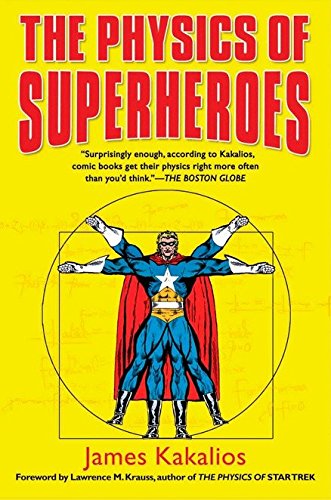
The Physics of Superheroes
کتاب های مرتبط
- اطلاعات
- نقد و بررسی
- دیدگاه کاربران
نقد و بررسی

Starred review from August 1, 2005
This terrific book demonstrates a number of important points. First, a subject that everyone "knows" is difficult and boring can, in the hands of a master teacher, be both exciting and fun. Second, it's a myth that only people particularly adept at mathematics can understand and enjoy physics. Third, superhero comic books have socially redeeming qualities. By combining his love for physics with his love of comic books, University of Minnesota physicist Kakalios has written a book for the general reader covering all of the basic points in a first-level college physics course and is difficult to put down. Among many other things, Kakalios uses the basic laws of physics to "prove" that gravity must have been 15 times greater on Krypton than on Earth; that Spiderman's girlfriend, Gwen Stacy, died because his webbing stopped her too abruptly after she plunged from the George Washington Bridge; and that when the Flash runs, he's surrounded by a pocket of air that enables him to breathe. Kakalios draws on the Atom, Iron Man, X-Men, the Ant-Man and the Hulk, among many others, to cover topics as diverse as electromagnetism, quantum mechanics, string theory and thermodynamics. That all of this is accomplished with enough humor to make you laugh aloud is an added bonus. B&w illus. Agent, Jay Mandel.

Starred review from October 1, 2005
Bam! Pow! Kakalios (physics, Univ. of Minnesota) delivers a one-two punch: real science and good fun. Does "leaping tall buildings in a single bound" have anything to do with Newton's three laws of motion? You bet, and Kakalios explains the connection in his lively, humorous style. He looks at momentum, friction, special relativity, properties of matter, light, magnetism, atomic physics, quantum mechanics, and solid-state physics as demonstrated by his favorite comic book heroes -including Superman, Flash, and the Invisible Woman -and shows that much of the time, comic book physics is accurate (though he exposes the bloopers, too). The book's a treat for anyone interested in physical science and can be enjoyed readily by math phobes and those with little science education, since Kakalios explains it all with clear detail and a good measure of fun. Highly recommended for small academic libraries and the science collections of public libraries of all sizes. [Popular science buffs may also enjoy Laurence Krauss's "The Physics of Star Trek" and Barry Parker's forthcoming "Death Rays, Jet Packs, Stunts & Supercars: The Fantastic Physics of Film's Most Celebrated Secret Agent" (Johns Hopkins, Nov.). -Ed.] -Denise Dayton, Jaffrey Grade Sch., NH
Copyright 2005 Library Journal, LLC Used with permission.

























دیدگاه کاربران